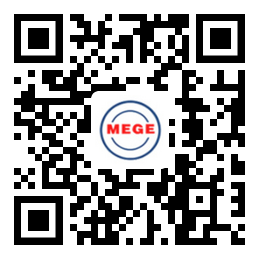A Shift in Bearing Architecture
01 Feb,2024

Randy Stott, publisher of Power Transmission Engineering and Gear Technology magazines, recently sat down with Norm Parker, technical fellow and technical manager for Torque Transfer Systems at Stellantis, to discuss bearing technology during the Motion + Power Technology Expo in Detroit.
How is the development of EV transmissions affecting the design and specification of bearings?
For automotive, we have a coaxial version which you might think of as a lucid design and then an offset version, which will be more like your Tesla design or the parallel axis version. What we might call Tesla is pretty much like a transfer case, a gear driven transfer case, if you will.
The lucid version is just a compact planetary. Nothing new there. What does make these different is we’re putting a ton of speed and power into these boxes like we haven’t before, and we’re seeing a big uptick from bearing manufacturers in premium features. For the load carrying side, we’re looking at a lot of nitriding,, a lot of carbon-nitriding, retained austenite control, custom quenching features, grain refinement, premium steels, etc.
On the speed handling side, we’re seeing your typical drivers for speed control. We’re seeing reduced tolerances. We’re seeing surface finish controls, custom cages, reduce run out control, that sort of thing.
What are the biggest challenges for bearings in the EV environment?
Every bearing in the EV drivetrain has its own unique challenges, and I’ll try to break these up into the unique challenges that they provide.
Parallel access design, for instance. I have motor bearings and input gear bearings. Sometimes these are along the same shaft, sometimes they are not. Sometimes, they share bearings and then we go to the intermediate shaft, which has its own unique challenges in every gearbox. And then the differential. And I kind of think of these like little neighborhoods that each have their own unique problems that I mustdeal with.
On the motor side, I must worry about electrical current damage. We have an insulating-isolation system. Then we move into the input gear system. We’re coming in at motor speeds, but now we have huge loads to contend with coming off the first gear mesh. The intermediate shaft, like any gearbox, is always challenging because you’re typically space limited on the intermediate shaft, and you have huge loads coming in.
You have a reaction coming off the input and the differential both going in the same direction, very challenging loads. And then the differential, which is classically known as the noise maker. Right. So, every one of these has very unique challenges.
Is there a shift towards or away from certain types of bearings?
Architecture is a conversation I have probably every day. If you look at the Tesla box, for instance, it’s all ball bearings and it’s hard to argue with the success that Tesla has had. So, it’s easy to look at this and say, that’s my answer. But for new people coming into the market, people want to find an edge over Tesla.
How can I keep up with Tesla? And it’s very tempting to look at the ball bearings on the differential and say, I can make the gearbox quieter. You will see people coming in and putting tapers on the differential and sometimes even the intermediate shaft with the angle that they’re going to make a quieter gearbox.
We’re seeing all different kinds of mixes of architecture along the main shaft or the motor shaft. And we’re seeing classic arrangements we haven’t seen in automotive in a long time, ball bearings and cylindrical combinations, right? This is a classic machine design that’s coming back into automotive and it’s really a tradeoff. There’s no right answer.
In fact, you might have several answers for every one of your applications. This one, I might want a quieter gearbox, you know, for maybe a luxury feature. Maybe this one I want a little better efficiency. Or maybe I have a sports car or a lightweight, fuel-efficient car. That’s it.
How much do bearings contribute to a transmission’s NVH performance?
This is a great question, and it has a little bit of a history. So the bearings themselves don’t make a ton of noise.
But how they control the gears is really where the meat and potatoes are. And I was a little spoiled coming up. I was trained by probably one of the best hypoid gear designers alive. And he taught me that gears make different noises in every plane X, Y, and Z, and they tilt in every plane X, Y, and Z.
And every one of these noise characteristics are different. And how we control these noise characteristics is at the bearings right? So, the LV NVHcreated by the bearings is relatively small. How much noise we prevent or create due to gear misalignment is really where the story unfolds. Okay, so that’s noise. What about efficiency?
There’s a lot of anxiety among buyers of EVs about the range of these vehicles. How much do you have to worry about energy loss and the efficiency of bearings?
This is another interesting question, like the noise question. How much do they contribute to noise? It’s how they contribute to efficiency. Bearings themselves don’t just have one efficiency. You don’t just take a taper and say it has this efficiency or in a ball bearing say this inefficiency.
It’s a dynamic problem. It depends on how hot we’re running, how much oil we have on the bearings and how heavy we load the bearings. Traditionally, I think everybody wants to say ball bearings are always more efficient than tapers, but that’s not the full story. If you take a ball bearing and load it with oil, have it sitting in oil, it’ll become much less efficient than a taper that has the proper oil now going to it.
This efficiency is very sensitive and dynamic. And when we look at the entire gearbox, we must take that into consideration. It’s not just the bearings, but how much inefficiency due to, the atmosphere that the bearings are running in.
How do you think the bearing requirements are going to continue to change as customer requirements change regarding performance, price, NVH, and other factors?
Are they going to start to associate a little bit of gear noise with better efficiency? I don’t know, but that’s an interesting question. Is it like a muscle car engine? I hear this kind of noise. I know it’s good. Or are they going to become less tolerant of gear noise?
I’m tired of this noisy gearbox. And I think we’re all going to grow together in this journey we’re on. I think we’re going to become better gearbox designers. I think we’re going to start making more efficient and quieter gearboxes and customers tolerance is going to go down as well for tolerating noise and inefficiency and things like that. I think we all have to get better and learn more about this animal as we move along.












